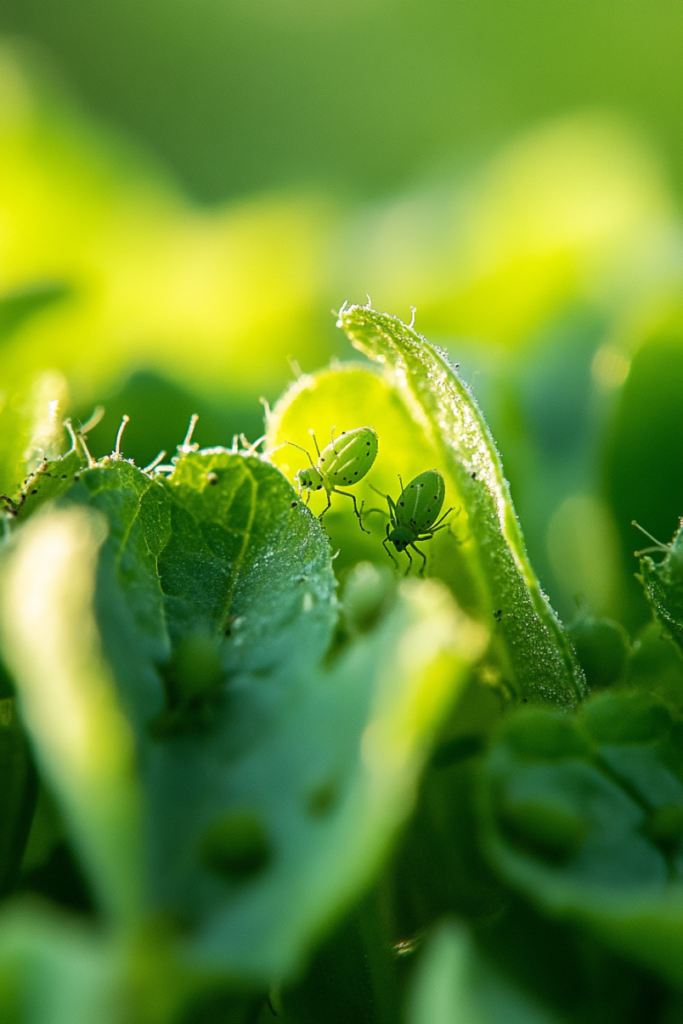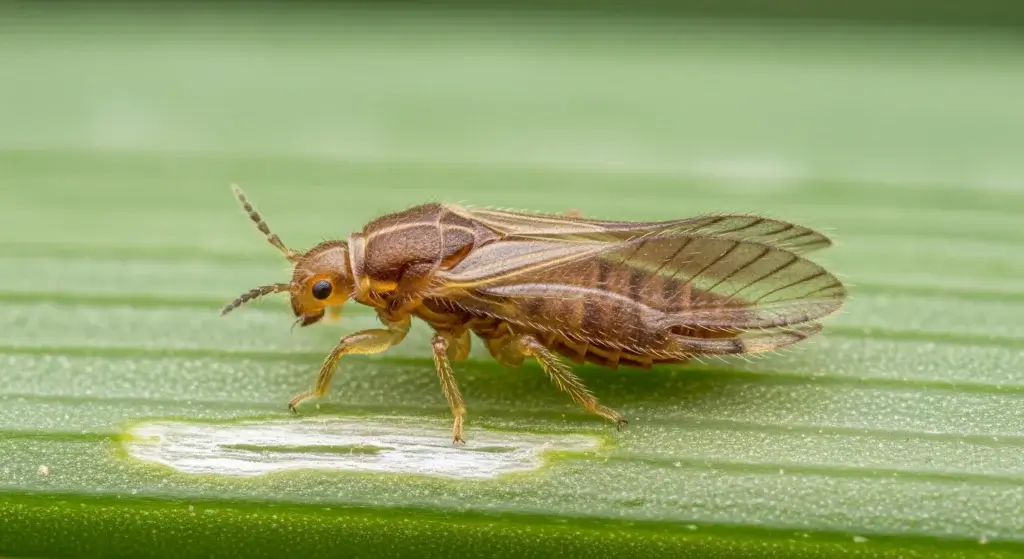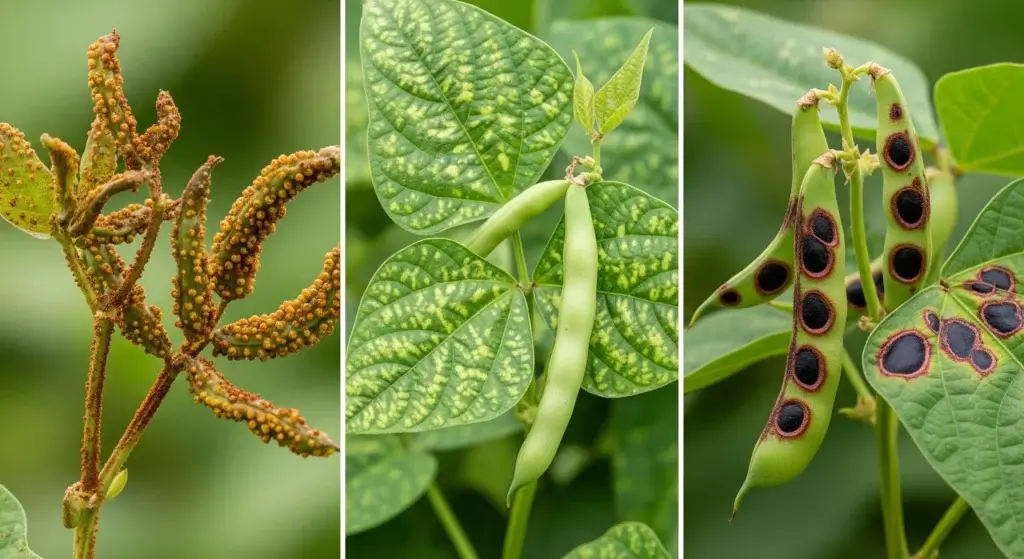
If you enjoy growing radishes, you may have come across tiny, pear-shaped pests called aphids.
These little insects can create significant issues for your radish plants, leading to stunted growth and lower yields.
In this blog post, we’ll discuss how to spot aphid infestations on radishes, the damage they can cause, and the best organic methods to keep your garden free from these pesky pests.
Signs of Aphid Infestation on Radishes
Aphids are small, usually green or black insects that cluster on the undersides of leaves and stems.
Here are the common signs of aphid infestation:
- Curling or yellowing leaves: One of the first signs of an aphid infestation is curling, wilting, or yellowing of radish leaves..
- Sticky residue: Aphids produce a sticky substance called honeydew. If you notice a shiny or sticky coating on the leaves, it’s a clear indication of their presence.
- Sooty mold: The honeydew produced by aphids often attracts fungi that result in a black, sooty mold on the leaves.
- Clusters of aphids: The most obvious sign is the presence of aphid clusters, particularly on the undersides of leaves or near new growth.
Aphid Damage to Radish Plants
Aphids can cause several issues for radishes, impacting both plant health and crop yield:
- Stunted growth: By feeding on plant sap, aphids deprive radishes of essential nutrients, leading to stunted growth and smaller radishes.
- Deformed leaves and stems: The continuous feeding by aphids causes leaves and stems to become curled, distorted, or wilted.
- Spread of plant diseases: Studies have shown that these insects transmit diseases like mosaic virus, which further affects radish growth and production (Journal of Plant Pathology).
- Reduced yield: An unchecked aphid infestation can significantly reduce the quality and size of radishes, making the harvest less productive.

Organic Control Methods
If you prefer organic gardening, there are several effective ways to control aphids without resorting to chemical pesticides.
These methods include cultural practices, biological control, and home remedies.
Cultural practices
Crop rotation
Rotating your crops each season is a smart way to prevent aphid infestations.
By changing the location of your radishes, you disrupt the aphids’ life cycle, making it more difficult for them to settle in your garden.
Companion planting
Certain plants, like garlic, onions, and marigolds, naturally repel aphids.
By planting these alongside your radishes, you can help keep the pests at bay and create a healthier garden environment.
Row covers
Using lightweight, breathable fabric to cover your radishes can provide a physical barrier against aphids and other pests.
These covers still allow sunlight and water to reach your plants while keeping harmful insects out.
Proper watering
Maintaining consistent watering is essential for the health of your radishes.
Both overwatering and underwatering can weaken the plants, making them more vulnerable to aphid infestations.
Aim for a balanced watering schedule to keep your radishes strong and resilient.
Sanitizing tools and equipment
Aphids can spread through contaminated gardening tools.
Make it a habit to clean your tools regularly to prevent transferring pests and diseases from one plant to another.

Biological Control
When it comes to fighting aphids, nature has some fantastic allies that can help keep their populations in check without harming your radishes.
Here are some beneficial insects to consider:
Ladybugs
Ladybugs are among the most effective natural predators of aphids.
In fact, a single ladybug can eat hundreds of aphids throughout its lifetime.
They’re a great addition to any garden looking to reduce pest numbers.
Lacewings
Lacewing larvae, often called “aphid lions,” are excellent at controlling aphid populations.
These little predators feed on aphids and other soft-bodied insects, offering a natural way to protect your garden.
Aphid midges
Aphid midges are tiny flies that lay their eggs near aphid colonies.
Once the larvae hatch, they feed on aphids, significantly lowering their numbers.
This is another natural method to help manage pests in your garden.
Parasitoid wasps
Parasitoid wasps are another useful ally.
These wasps lay their eggs inside aphids, and as the larvae develop, they eventually kill the host aphid.
This process can effectively control larger infestations.
Home Remedies
If you prefer cost-effective and organic solutions, several home remedies can help you tackle aphid problems on your radishes.
Here are some effective options:
Neem oil
Neem oil is a natural insecticide that can disrupt the life cycle of aphids.
It’s safe for your plants and beneficial insects when used properly.
To use it, mix neem oil with water and spray it directly onto the affected areas of your radish plants.
Insecticidal soap
Insecticidal soap is another great remedy that works by suffocating aphids.
To avoid harming your plants, spray the soap solution in the early morning or late afternoon when the sun isn’t too strong, preventing leaf burn.
Diatomaceous earth
This natural powder acts as a desiccant, meaning it dries out and kills aphids on contact.
Simply sprinkle diatomaceous earth around the base of your radishes to deter these pesky pests.
Hot pepper spray
A simple mix of hot pepper and water can be sprayed on radish leaves to repel aphids.
This organic solution is a straightforward way to keep pests away from your plants.

Prevention Tips
Preventing aphid infestations is always better than trying to deal with them after they occur.
Here are some effective tips to keep your radishes safe from these pesky pests:
Monitor regularly
Make it a habit to regularly check your radish plants for any signs of aphids.
Catching them early can prevent a small problem from turning into a big infestation.
Maintain garden cleanliness
Keep your garden tidy by clearing away weeds and debris, as these can provide hiding spots for aphids.
A clean garden is less likely to attract pests.
Encourage beneficial insects
Create a diverse garden by planting flowers like daisies and sunflowers.
These attract ladybugs and other helpful insects that naturally control aphid populations.
Plant resistant varieties
Some radish varieties are more resistant to aphids than others.
Do a little research to find and choose varieties known for their pest resistance.
Avoid over-fertilizing
Using too much nitrogen can attract aphids because it leads to lush, tender growth that they love.
Instead, opt for balanced fertilizers to keep your plants healthy without drawing in pests.

Final Thoughts
Aphids on radishes can be a nuisance, but with the right strategies, you can keep your plants healthy and productive.
Whether you opt for cultural practices, biological control, or home remedies, managing aphids organically is entirely possible.
Remember, prevention is key, so keep an eye on your plants and act swiftly at the first sign of trouble.
By creating a balanced ecosystem in your garden, you’ll not only protect your radishes but also promote a thriving, sustainable space.



